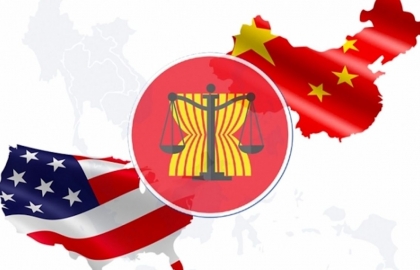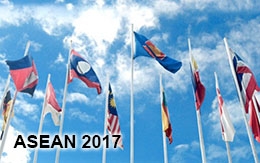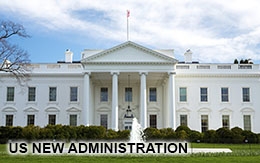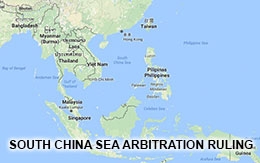Major power competition in the South China Sea and Southeast Asian responses
Major power competition, particularly the growing Sino-US multi-faceted rivalry characterized global politics in 2020. The South China Sea featured prominently in this rivalry in 2020.

Developments in 2020
The statistics are deceiving. One may claim that there have not been dramatic changes in the activities of China as well as the US in the South China Sea in 2020. For example, there have not been more high-profile incidences in the South China Sea compared to previous years. The number of military operations has not increased significantly. China, for example, conducted 37 major military exercises in the South China Sea compared to 35 the year before. The United States conducted 39 joint military exercises with its allies and partners, much less than the 63 operations conducted in 2019. US overall military exercises, including unilateral and those conducted with partners, stood at 55 operations in 2020 (down from 73 operations in 2019). What the US did increase were the number of FONOP operations. The Trump administration conducted 10 FONOPs in 2020 (compared to 8 in 2019), that makes 28 of such operations in the four years in office of President Trump.
However, the change in US-China rivalry in the South China Sea were more qualitative than quantitative. The level of militarization of China’s operations in the South China Sea has increased with deployment of China’s one of the most advanced weapon, such as the test fire of its DF-26 anti-carrier missile into the South China Sea. The US, on the other hand, deployed the two-carriers battle group to the South China sea at least twice in the last 6 months. China’s adoption of the Coast Guard Law indicates its readiness to be more assertiveness even within the “gray zone”. China is also gradually expanding its presence and effective control in the South China Sea not just by military means but also by civil-administrative measures designed not to provoke strong responses from those affected.
The most dramatic changes were in the legal-diplomatic front, where the US clarified its legal position in light of competing interpretation of applicable laws, launched waves of diplomatic attack on China’s strategic advancement in the South China Sea, and started sanctioning specific Chinese SOEs for serving as strategic instruments of its government. The US decision to join the “battle of diplomatic notes”, which already were one of the most significant legal developments regarding the South China Sea issues after the Tribunal rulings in 2016, further internationalized the legal aspect of the South China Sea issues. The exchange of diplomatic notes also marks the first time a country touched upon the sovereignty issue regarding the Paracels and Spratly Islands, challenging China’s sovereignty claims to these features on the record, albeit implicitly.
Diplomatically, both US and China conducted the most intensive “shuttle diplomacy” campaigns with South East Asia, despite Covid-19. In barely 6 months, China’s President Xi spoke directly with 6 ASEAN leaders; China’s foreign minister Wang Yi physically met all of his ASEAN counterparts, while defense minister Wei Fenghe visited most of the South China Sea littoral states. US likewise despatched high-level visits to South East Asia while Secretary Pompeo were also on regular phone calls with almost all of ASEAN member states.
The Biden administration shows no sign they it would ease out on the South China Sea. Seeing competition with China as a necessity and confrontation a possibility, the Biden administration is tightening up ties with its allies in preparation for a long, enduring competition. After evolving gradually in 2020, the QUAD received a boost in early 2021 and can be seen as a US moderate gain in pulling like-minded countries together in its Indo-Pacific strategy.
Responses from Southeast Asian countries
Southeast Asian countries face similar dilemmas of not choosing to pick side in the growing major power rivalry and seems to be resorting to some or all of the following measures: consolidating ASEAN cohesion and collective strategic autonomy, upholding multilateralism and international law, particularly the 1982 UNCLOS; emphasizing incident prevention and management; preferring an early resumption of the COC negotiation; maintaining open and transparent communications with all major powers.
The ASEAN Foreign Ministers’ statement adopted on 8 August 2020 implicitly signal ASEAN’s “neutrality”, which in today’s context is different to the 1971 ZOPFAN’s meaning of equi-proximity, i.e. trying to stay away from all the troubling powers. ASEAN’s neutrality in 2020 is closer to being strategically autonomous, where ASEAN make its own decision on where it stands depending on the issues.
Several South China Sea littoral states chose to clarify their legal positions on the South China Sea, effectively aligning themselves explicitly or implicitly with the 2016 Tribunal rulings. All 6 ASEAN littoral states to the South China Sea have in one way or another expressed their endorsement of the Tribunal rulings or wanting UNCLOS to be enforced. ASEAN itself adopted strong language in support of UNCLOS in its annual statements. The leadership ASEAN provided on this legal front opened the way for more in-depth discussions on what was often referred to vaguely as the rules based order. For the first time, several countries outside of the region explained how they thought the 1982 UNCLOS should be interpreted and applied to the South China Sea. The coordinated note verbales from the UK, France and Germany showed that these European countries want a voice in the formation of the rules based order in the Indo-Pacific which would immediately have ramification elsewhere, including in Europe. It also shows interests in shaping order in the Indo-Pacific go beyond Indo-Pacific countries.
With regards to the COC negotiation, although increasingly skeptical of China’s ability to subject the PLAN and coast guards to exercising restraint, ASEAN still hope that the process would provide an opportunity to manage the South China Sea issues in a multilateral setting between ASEAN and China. Emphasis is still placed on incident management, especially regarding fishing or involving fishermen at sea, as these are the most likely type of incident to occur in the South China Sea.
Conclusion
Major power competition in the South China Sea drives up tensions, increase the risk of incidents at sea, subject regional institutions to stresses and fatigue, and erode the much-needed atmosphere of trust and amity for resolving regional maritime disputes. But there should not be an illusion that resolving the maritime disputes in the South China Sea would clear out major power competition in the region because maritime disputes were never its original cause.
To manage the South China Sea, therefore, the region’s first and primary task is work towards an open, inclusive, transparent and rules-based regional security architecture where major decisions are made based on rules and norms rather than power, with due respect to the interests of all countries. This is in line with most Indo-Pacific visions, including ASEAN’s AOIP. What matters now are actions to concretize and realize such visions or ASEAN risks losing relevance or being side-lined if it is too idled or distracted in the fast changing and geo-strategically important Indo-Pacific.
Dr. Nguyen Hung Son is Vice President of the Diplomatic Academy of Viet Nam.










